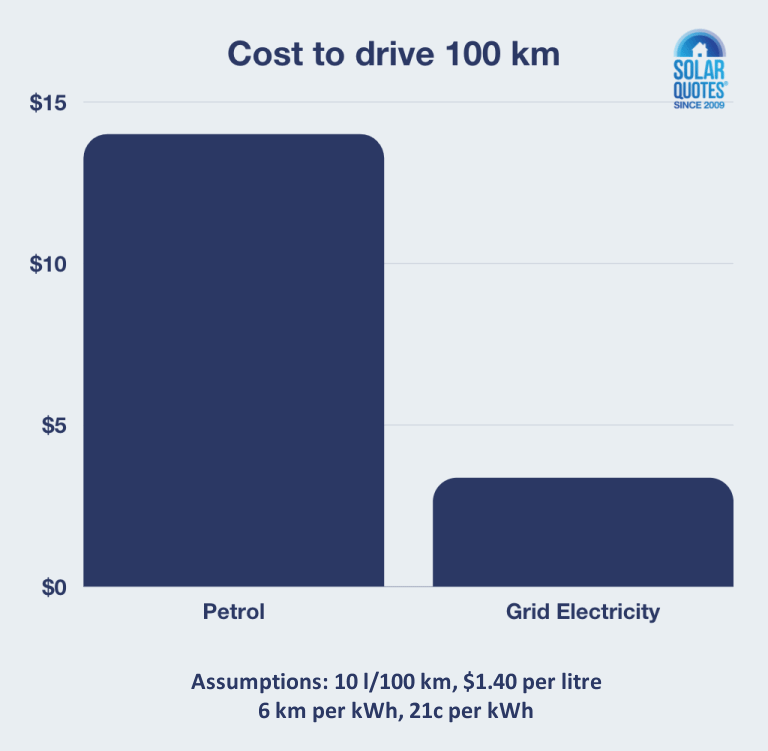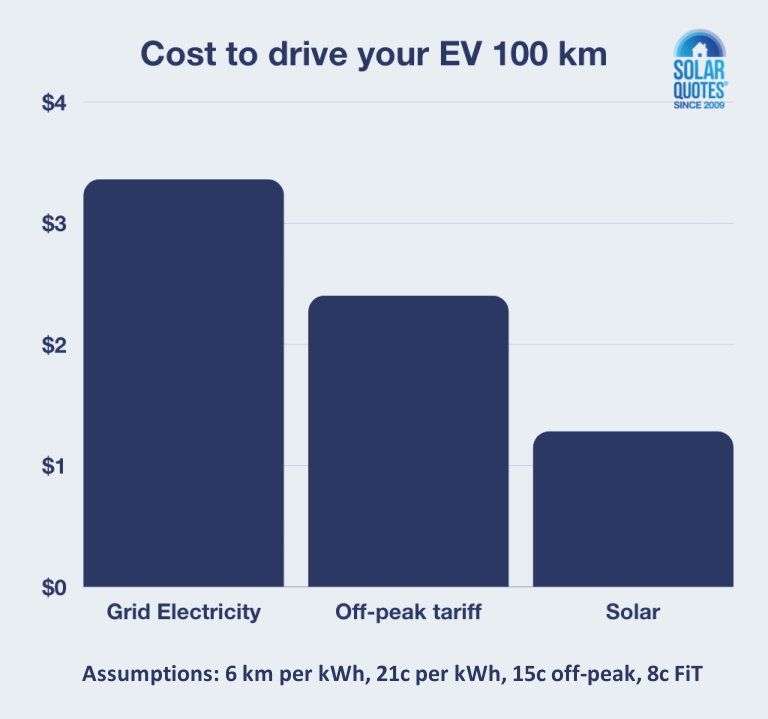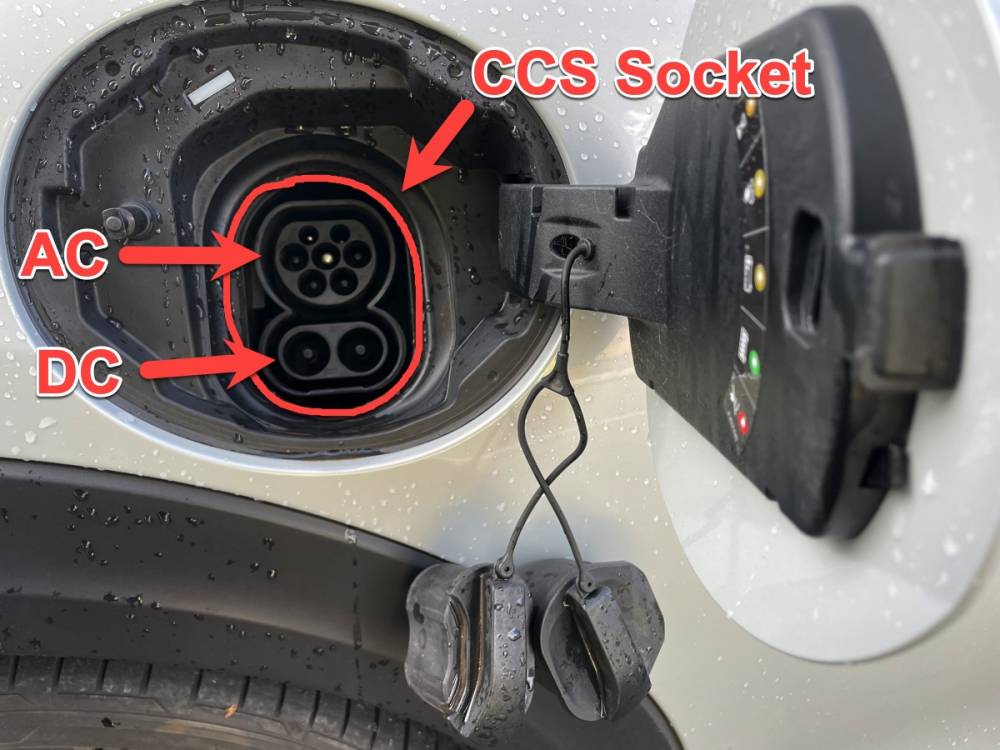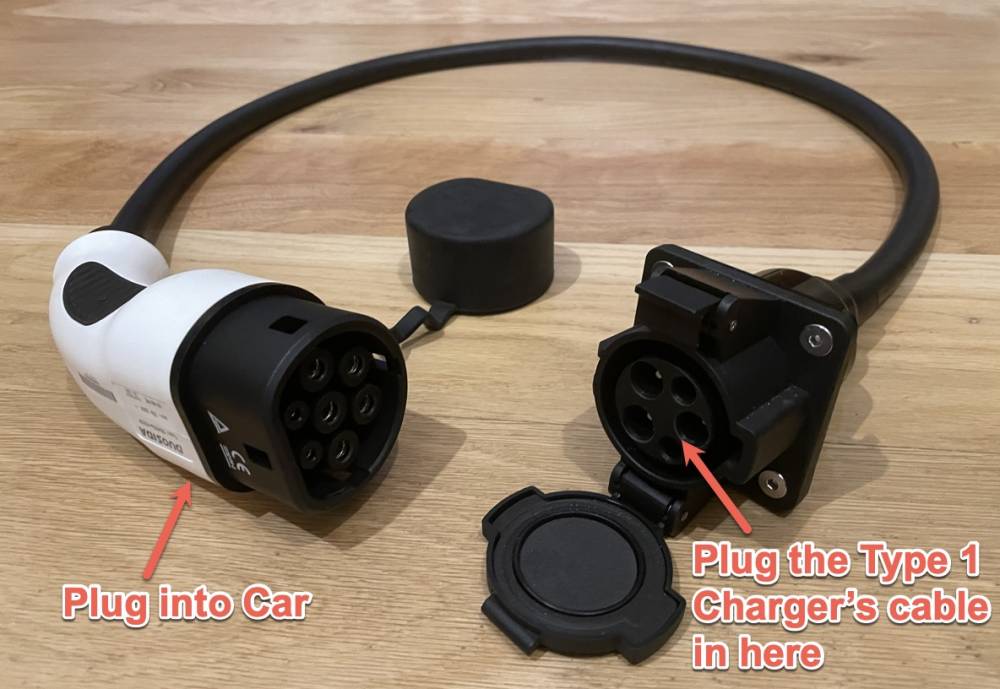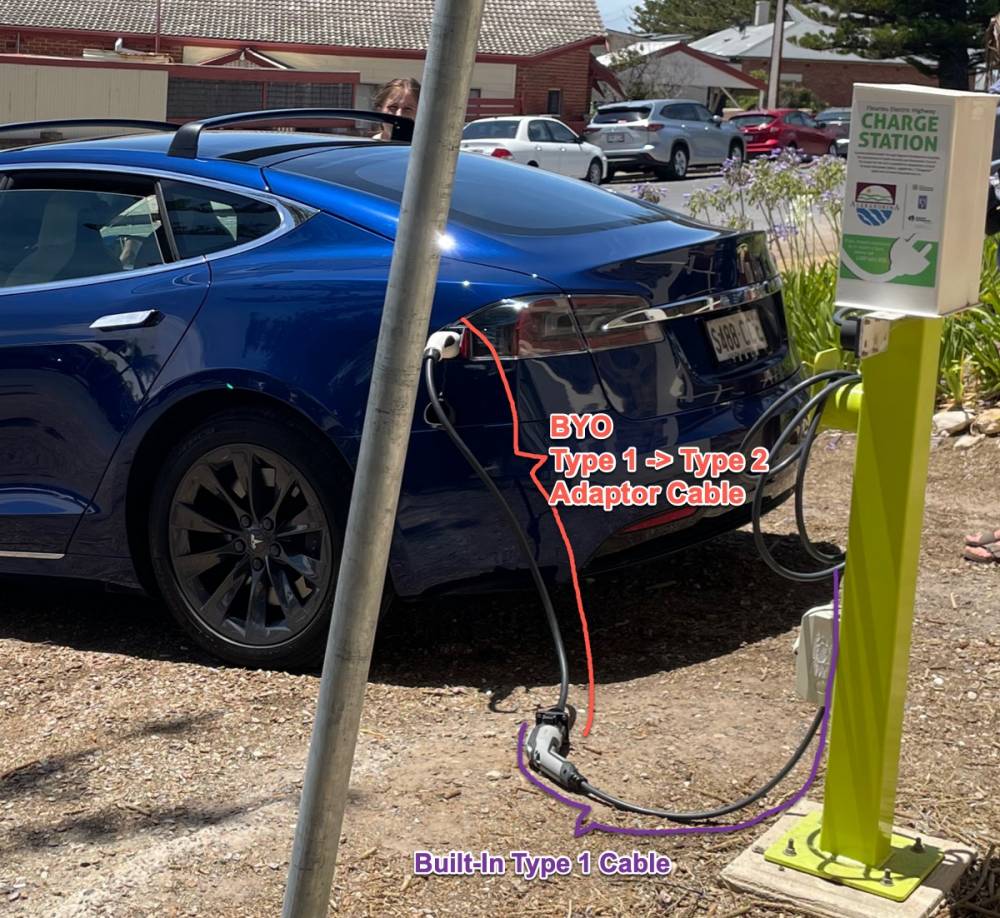EV Charging 101
By Finn Peacock – Chartered Electrical Engineer, Ex-CSIRO, Electric Car Owner & Founder of SolarQuotes
Last Updated: 11th Sep 2024
Understanding Electric Vehicle Chargers
Whether you’re considering an EV, are waiting on a delivery or drive an electric vehicle, understanding how they charge (and how you can charge them) is an essential part of ownership.
This plain English guide explains everything you need to know about charging your electric car:
- The difference between kW and kWh when charging an EV.
- What does it cost to charge an EV at home?
- How home charging works.
- AC vs. DC charging
- Level 1, 2 and 3 charging.
- Charging connectors: Type 2 & CCS
- Should you install Level 2 charging on your home?
- Single or three-phase charging?
- What features does your charger need?
- Charging away from home.
- How much solar power do you need to charge an EV?
- Life with an electric car – tips and tricks.
- Bi-directional charging – the holy grail of EV ownership?
- Home EV chargers available to buy in Australia
1) The difference between kW and kWh when charging an EV.
In this guide, I’ll talk about power (kW) and energy (kWh). It’s crucial to know the difference! People mix these up all the time – even electricians who should know better.
In the context of electric vehicle charging:
- Power – kW – refers to how quickly you charge your EV battery. Home charging works at speeds from 1 kW up to 22 kW.
- Energy – kWh – refers to the amount of energy your car’s battery can store. An electric car will travel about 6 km for every kWh of charge.
2) What does it cost to charge an EV at home?
The typical petrol car gets 10km of range from 1 litre of fuel. The typical electric vehicle gets about 6km of range from 1 kWh of electricity.
For a petrol car, you’d need 10 litres of fuel to drive 100 km. At a very conservative cost of $1.40 per litre of fuel, 10 x $1.40 = $14 to drive 100 km.
Note: At the time of writing, petrol is over $2 per litre – but I’m going to stick with $1.40 to show that EVs are much cheaper, even without a crackpot Russian dictator inflating fuel prices.
In an EV, you’ll need about 16 kWh of electricity to drive 100 km. If your electricity retailer charges 21c per kWh, the cost is 16 x $0.21 = $3.36.
So to drive 100km, it’ll cost you $14 in petrol or $3.36 in grid electricity.
Electric vehicles become even cheaper to drive if you factor in charging from solar panels or charging on an off-peak rate from a time-of-use (ToU) tariff. Let’s run some numbers to illustrate:
Cost of charging with solar power
If you have a 21c electricity tariff and an 8c solar feed-in tariff, the net cost of charging a car with solar power is 8c. This is 13c per kilowatt-hour cheaper than charging an EV with grid electricity.
So, to charge your car with 100 km of range from solar panels, it’ll cost 16 x $0.08 = $1.28.
Cost of charging with a time-of-use tariff
Time-of-use tariffs charge you different rates for electricity depending on the time of day you draw from the grid.
Compare the different prices of electricity at different times of day from Aurora Energy in Tasmania:
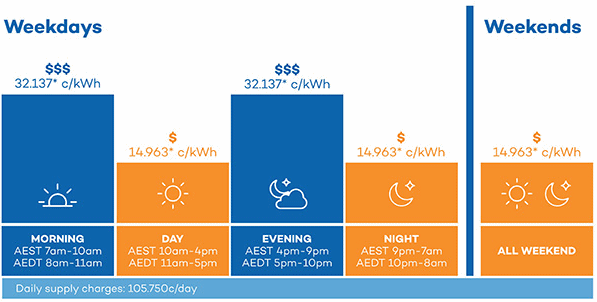
An example of a ‘time of use’ tariff in Tasmania. Image credit: Aurora Energy
If you set your EV charger to only operate from 10 am-4 pm on this ToU plan from Aurora, it will cost you 16 x $0.15 = $2.40 for 100 kilometres worth of range.
The future of electricity plans in Australia is time-of-use tariffs with the cheapest electricity during the day (lots of solar energy) and overnight (usually plenty of wind, little demand).
In South Australia, there are time-of-use tariffs offering a ‘solar sponge’ period where you’re charged a measly 7.5c per kWh during the middle of the day.
Some retailers also offer special EV tariffs, where you either pay a low per-kWh rate to charge your EV at certain times or pay a flat daily fee for unlimited charging.
The bottom line is – electricity plans designed for EV charging will only become more common.
One last thing – beware of ‘Demand Tariffs’. These electricity plans charge you a lower overall rate for electricity but slug you big time if your power draw exceeds a certain threshold. Charging your EV using a 3-phase 22 kW charger could mean you pay 10x the standard rate for electricity!
3) How home car charging works
A basic EV charger is a very simple device. Its job is simply to ‘ask’ the car if it can accept any charge, and if it can, safely send power to the vehicle until it’s told to stop.
This is the bare minimum functionality.
The EV charger can’t push power to the car faster than the car’s request (this is dangerous) but if yours has some smarts it can decide to slow the charge down or charge based on other conditions – such as:
- The time of day
- Electricity prices
- Surplus solar energy generation
- State of charge of a home battery
- A remote command from your local electricity network
4) AC vs DC Charging
Home charging uses AC
Everything plugged into the wall at home uses AC electricity.
Residential electric vehicle chargers are AC too. This means they don’t do anything very special. They simply regulate how many kilowatts of 230V AC electricity goes into your car.
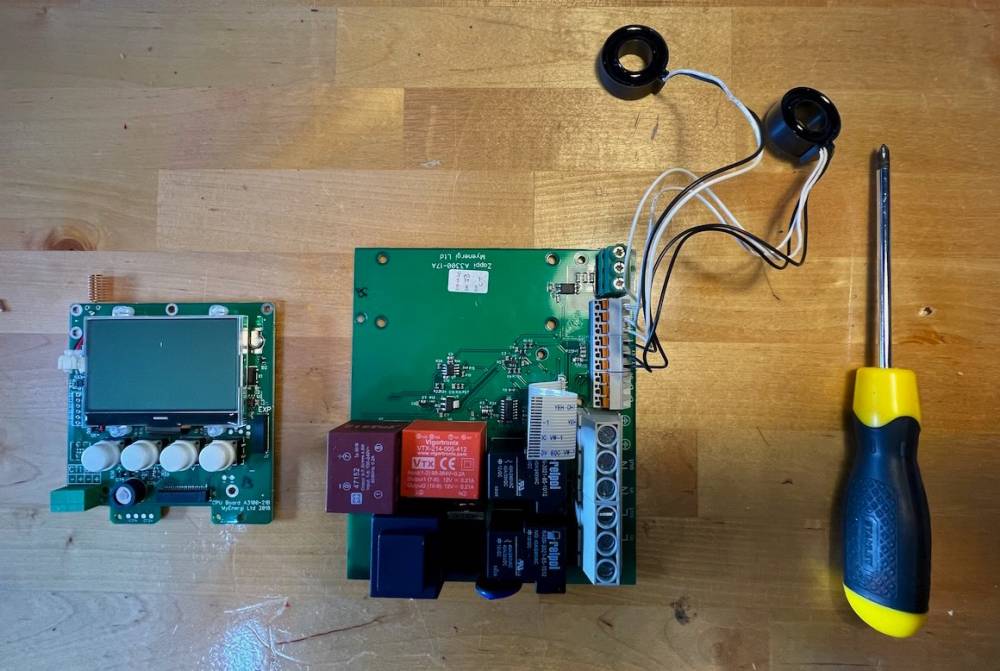
All the power electronics inside a home EV charger. They are pretty simple devices
In fact, the box of electronics you can buy to charge your car at home isn’t technically a charger, because all it does is provide a regulated flow of AC electricity. Technically speaking, the real charger is inside the car, converting the AC to DC electricity and taking care of all other charging duties.
That onboard EV charger has a hard power limit on its AC-DC conversion. Eleven kilowatts is the limit for many electric vehicles – such as the Tesla Model 3 and the Mini Cooper SE.
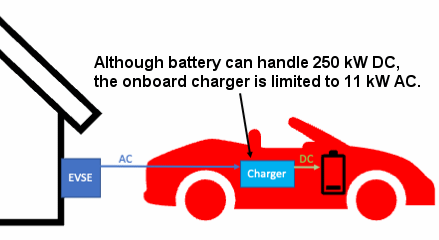
With Level 2 charging, the onboard EV charger limits the rate.
Nerd Confession: To be technically correct, I should call the devices that you plug into your car at home EVSEs (Electric Vehicle Supply Equipment). But that would confuse most laypeople, so at the risk of angry emails from retired engineers, I’m calling these devices ‘chargers’.
Really fast charging is DC
Dedicated, high-speed public EV chargers are chargers in their own right that put DC electricity directly into your battery. They are not constrained by the car’s onboard charger because they don’t use it.
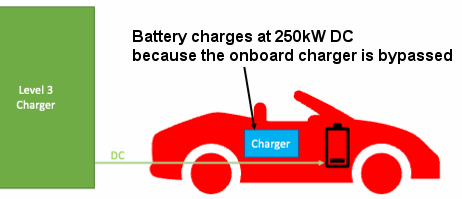
With Level 3 EV charging, the onboard charger is bypassed.
These bad boys can charge at up to 350 kW DC, if your car can handle it. Be aware that they do have to slow down substantially as your battery reaches about 70%. Still, they can add 350 km of range in as little as 10 minutes.
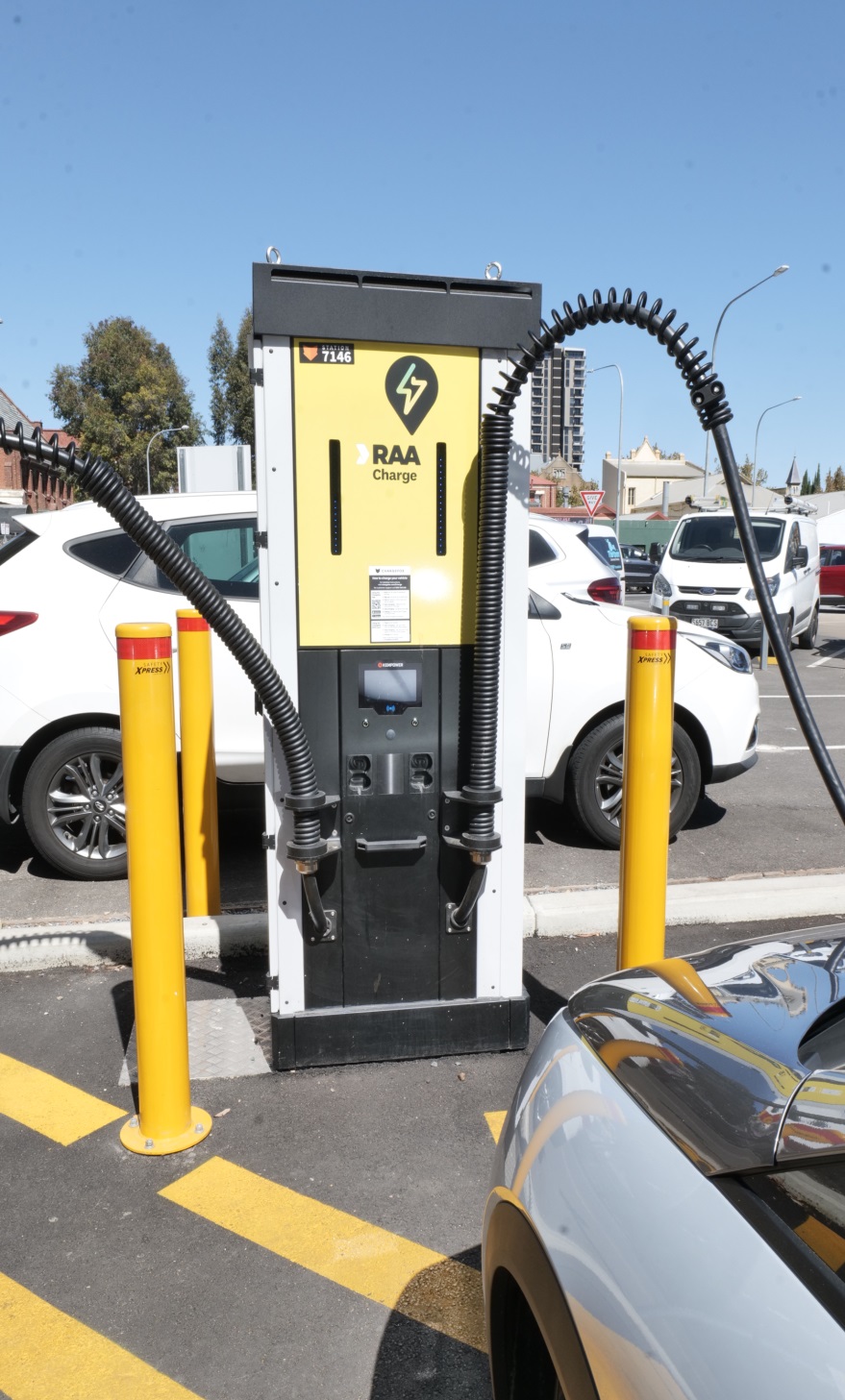
A 350 kW DC fast charger from the RAA.
5) Level 1, 2 and 3 EV charging
The industry has settled on jargon to describe slow, medium and fast charging. Rather boringly it’s called Level 1, Level 2 and Level 3 charging.
Level 1️⃣ charging: A painfully slow trickle
⚡️Charging speed: Approx. 10 km added per hour
Level 1 chargers are simply a cable and power brick that connects to a standard powerpoint. They charge at 1.8 to 2.4 kW from a standard home socket.
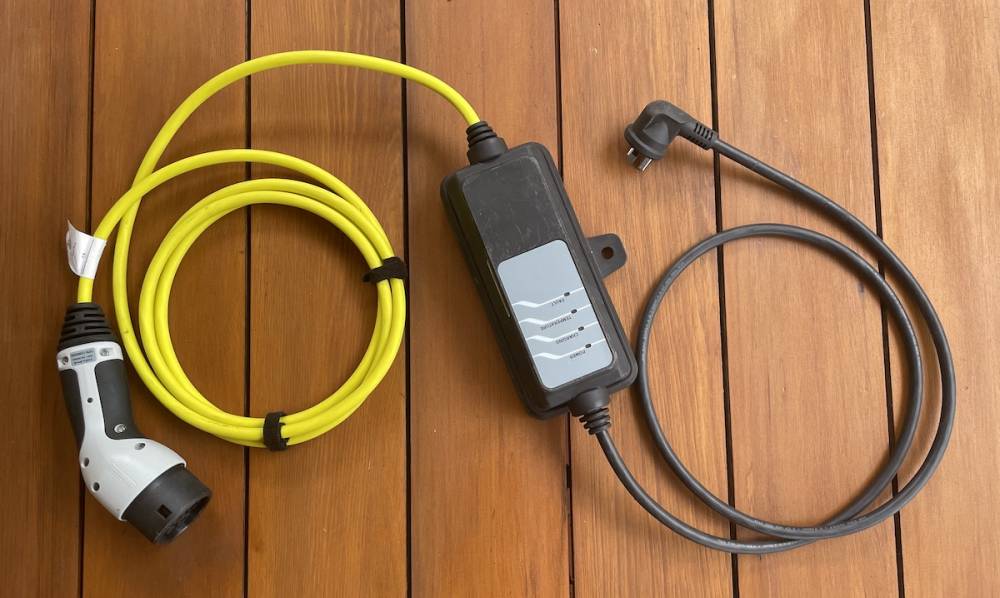
Mobile charger for the Mini Cooper SE
Pro-tip: If your car manufacturer does not include a mobile connector with the car, make sure you buy one and put it in the boot – even if you never use it at home, it will save your bacon one day.
Warning: If you plan on regularly charging your car with a mobile connector, please read our electrician’s advice on EV charging from a standard power point.
To put into context what a Level 1 charging rate of 1.8 kW means – it will add 1.8 kWh every hour to your car’s battery.
1 kWh of charge in an EV battery equals about 6 km of range. So, a Level 1 charger will give you about 10 km of range every hour it’s plugged in. If you plug your car in overnight (approx. 8 hours), you’ll add about 80 km of range.
But Level 1 can charge at higher speeds. Depending on the manufacturer, your device may have an interchangeable plug.
All portable EV chargers come with a regular 10A plug, the same as every other appliance in your home, but some will also have an interchangeable 15A plug. This has a wider earth pin and needs a special socket with thicker wiring that can handle 15A. If you have a caravan, you’re probably familiar with them.
A 15A plug allows a charge rate of 3 – 3.4kW, which adds about 18 km of range per hour.
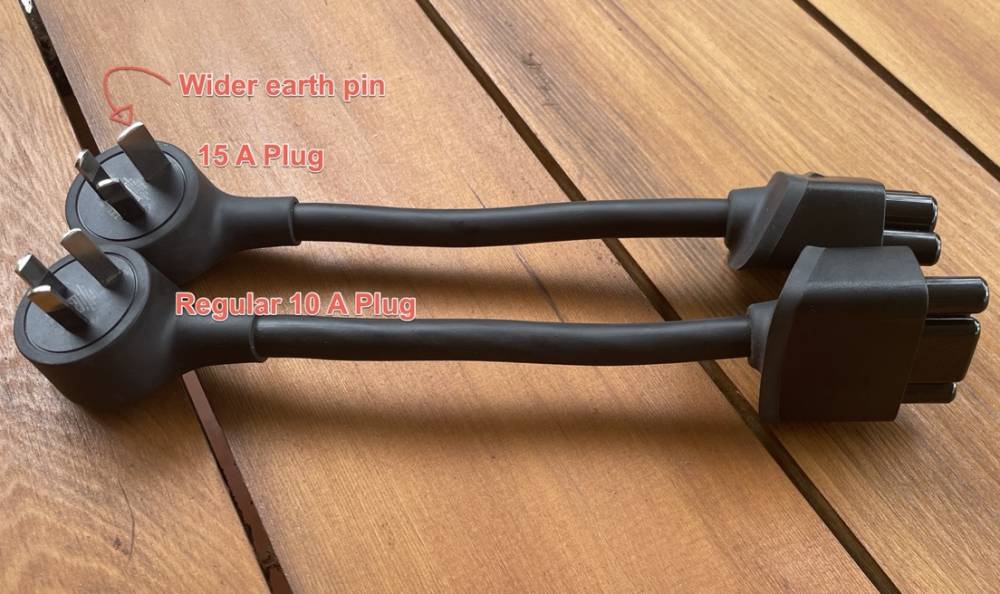
Some mobile chargers have 15A ‘tails’. These are the 10A and 15A tails that come with an Australian Tesla mobile charger.
If your portable charger has a 15A tail and you want to charge at home, you’ll need to get a 15A socket installed where your car will park. Expect to pay about $500 for this installation.
Nerd Fact: If your local grid voltage runs high (it should be 230V but is often to 240V+), you’ll get a bit more power because power = current x voltage.
Bonus Nerd Fact: Depending on the manufacturer, mobile chargers are often limited to 80% of their rated current. So a 10A charger may only operate at 8A, and a 15A device may only operate at 12A. That, combined with a fluctuating voltage on the grid, means I can’t give precise EV charging speeds for mobile connectors.
Tesla Nerd Fact: Tesla mobile chargers imported after November 2021 can charge at the full 10A or 15A, depending on the tail used.
Pro-tip: If you have a recent Tesla and are lucky enough to have a 3-phase socket in your garage, you can buy third party tails that can charge at 4.8 to 7kW (20 to 32A) using your mobile connector.
Level 2️⃣ charging: fast enough to recharge overnight
⚡️⚡️Charging speed: approx. 40 km of range per hour (single-phase) or up to 130 km of range per hour (three-phase)
Level 2 charging needs a dedicated wall charger with its own dedicated wiring back to your switchboard.
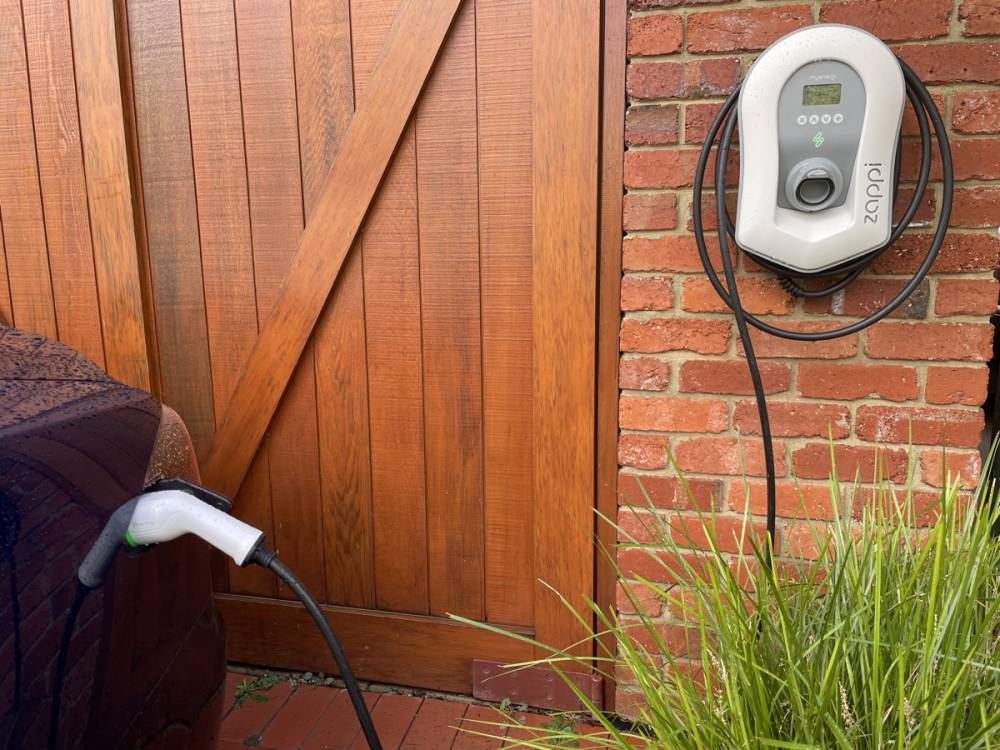
My Level 2 EV charger
Level 2 chargers cost $900 – $2500 for the hardware and about another $500-$1000+ to install. This pricing also assumes your switchboard and mains supply can handle the extra load. If they can’t, upgrading your supply can cost thousands of dollars more.
A single-phase, 7 kW Level 2 charger will add about 40km of range per hour. A three-phase, 22 kW EV charger will add about 130km of range per hour if your car can handle it.
Nerd Fact: Although a 3-phase Level 2 charger can output up to 22 kW, many cars can’t invert the AC power that quickly. Check your car’s specs to see its maximum AC charging rate.
Level 3️⃣ charging: a raging torrent of electrons – fast enough to top up on the go.
⚡️⚡️⚡️Charging speed: 200-1000 km per hour
Level 3 chargers go far beyond what the typical residential home can handle or afford.
Such chargers are exclusively DC and have an output of 50 kW to 350 kW. They cost $100,000+ to install and need a monster power supply, so you are unlikely to install one at home.
Level 3 EV chargers let you quickly top up on long trips.
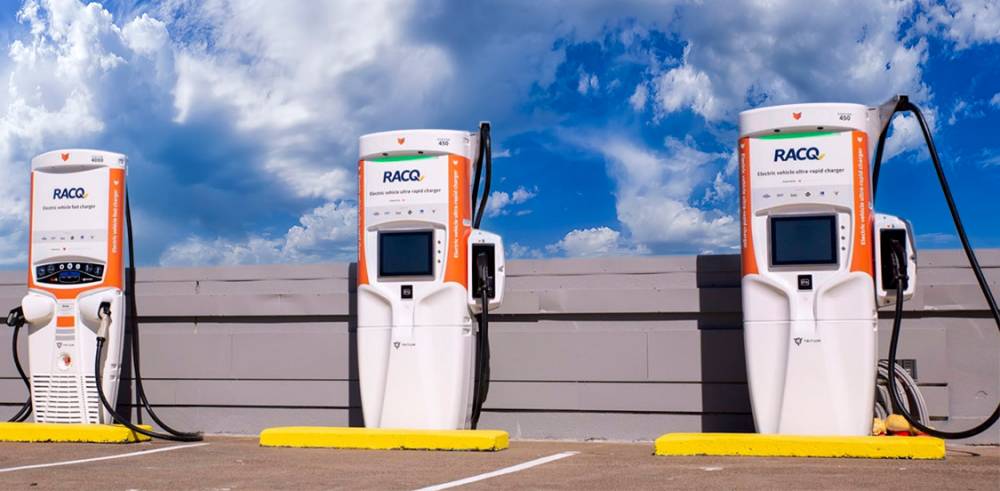
Level 3 fast DC chargers in QLD
Tesla’s Supercharger network is the most well-known example of a Level 3 charger. The most common “V2” Supercharger has a maximum power output of 120 kW, which adds up to 180km of range in 15 minutes.
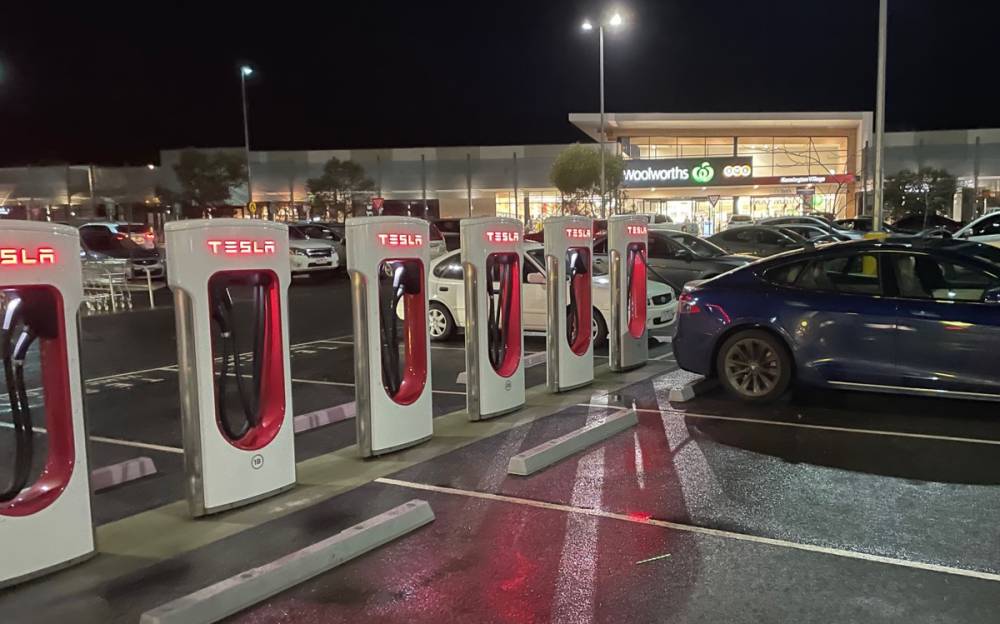
A bank of Tesla Superchargers in Bendigo
Tesla’s Supercharger network gives them a competitive advantage over other electric car makers due to their placement along popular travel routes, their reliability/uptime, and the sheer number of them compared to other Level 3 chargers.
But, as electric vehicles become increasingly common, expect other competing networks to pop up across the country and improve their reliability.
Pro-tip: Charging at Level 3 stations too often will degrade your car battery faster.
Tesla Nerd Fact: The red and white “V2” Tesla superchargers in Australia are all DC fast charging and will typically charge at 40-100 kW depending on how many other cars are using them at the same time. A small number of upgraded “V3” Superchargers in Australia can charge at up to 250 kW.
Pro-tip: Beware of slow AC chargers on road trips. Some roadside chargers are the slower, AC type and may only charge at 3 to 22 kW. These are fine for topping up a little while you are parked but not fast enough to conveniently recharge on the go.
6) Charging Connectors: Type 2 & CCS
All electric cars sold in Australia since Jan 1 2020 come with an AC charging socket known as ‘Type 2’ (or sometimes called a ‘Mennekes’).
It looks like this:
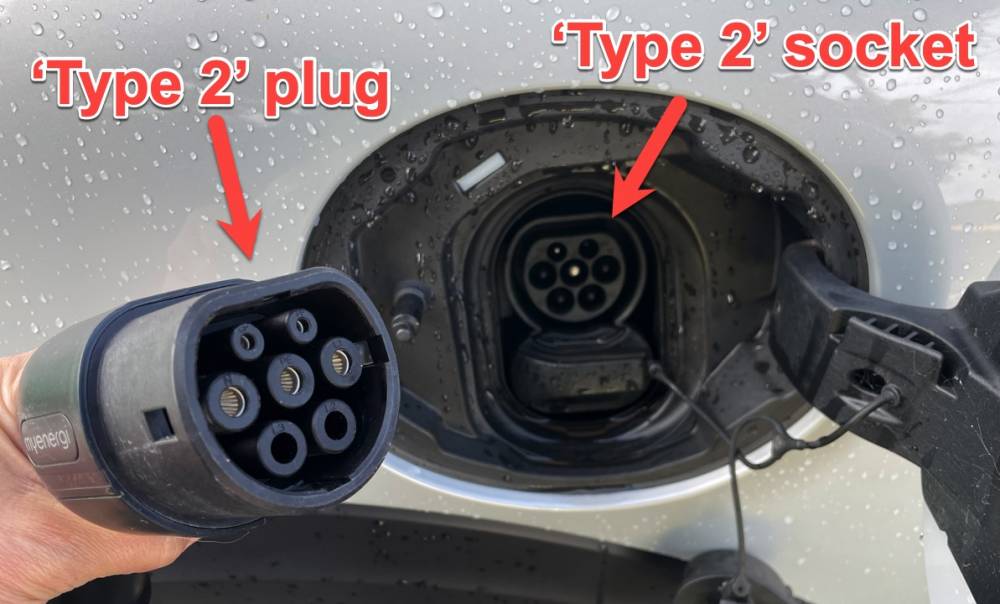
A Type 2 Charging Plug & Socket on my wife’s Mini Cooper SE.
This plug/socket combo is used for Level 1 and Level 2 AC EV charging.
Almost all Australian EVs sold since 2020 capable of Level 3 DC charging will also have a second socket immediately below the Type 2 socket. This socket combination is called ‘CCS’ (Combined Charging System). If I pull the bottom rubber cover off, all is revealed:
The bottom two pins are for DC electricity, and Level 3 chargers use a monster plug like this to plug into the entire socket and push tens to hundreds of kilowatts directly into your battery:
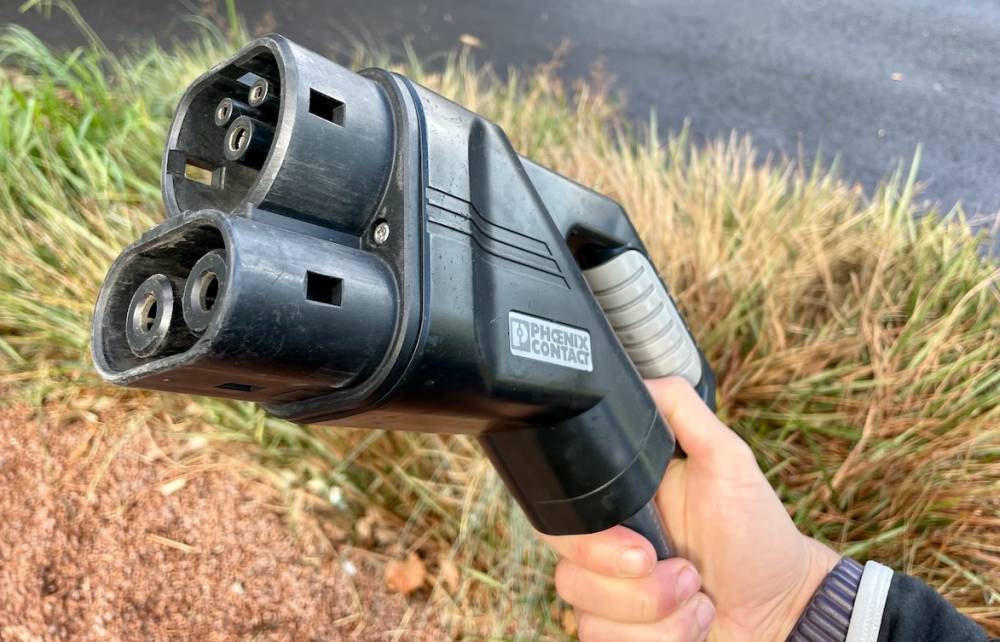
A huuuuge CCS plug for charging with fast DC power
The only modern EVs with non-CCS DC-charging sockets in Australia – that I know of – are Japanese EVs such as the Nissan Leaf 2 and Lexus ux300e, which use a ‘CHAdeMO’ socket for DC charging and a Type 2 socket for AC charging.
Tesla Nerd Fact: Tesla Superchargers are the only Level 3 chargers that can DC charge a Tesla through a Type 2 socket. This allows older Teslas that only have a Type 2 socket to supercharge. All Tesla electric vehicles sold in Australia since 2020 come with a CCS socket.
7) Should you install Level 2 charging on your home?
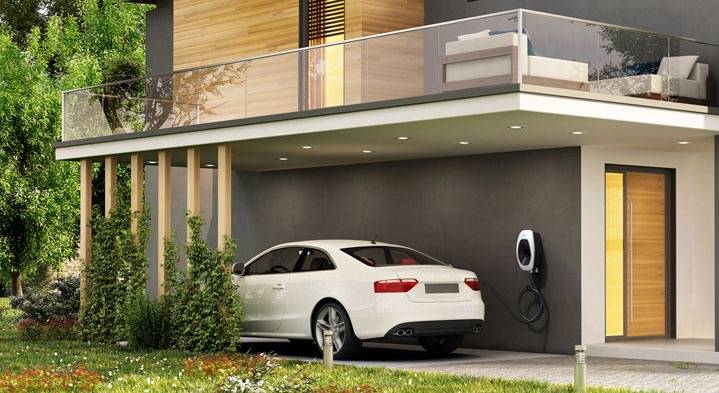
A Delta Level 2 Charger. Image: Delta
EV owners ask me if buying a dedicated Level 2 charger for their home is worth it.
$2000+ to supply and install a dedicated EV charger is a good chunk of change, especially when you may get away with Level 1 charging via a powerpoint most of the time.
The value of a dedicated EV charger comes down to your circumstances. Speaking as someone who has two electric vehicles, I wouldn’t like to be dependent on Level 1.
My wife’s electric Mini only has a 35 kWh battery – but even that takes 20 hours to charge from empty on its mobile charger. With its 75 kWh battery, the Tesla takes a couple of days to fully recharge from a regular powerpoint. Personally, I can’t imagine only having those low charge speeds at home.
But the showstopper for me when it comes to slow EV charging is that I’m on a time-of-use tariff with $0.16-per-kWh electricity between 10am and 3pm every day. There is no way a trickle charge will consistently top up both cars during that 5-hour window (which also coincides with my solar energy generation). So a trickle charger would limit my ability to fuel my cars with the cheapest electricity available to me: solar power topped up with off-peak grid electricity.
8) Single-Phase Or Three-Phase Charging?
If you have three-phase power at home, you may find paying extra for a three-phase charger overkill. That’s because – as explained earlier – many electric vehicles (like the Tesla Model 3) do not have an onboard inverter powerful enough to handle the full 22 kW AC of three-phase home EV charging.
Most electric vehicles can only handle up to 11 kW of AC power, which is half the maximum power capability of three-phase charging.
If you only have one EV, the 7 kW from a single-phase charger should be enough unless you have a pressing and recurring need to charge your car quickly. Having a three-phase charger makes more sense if you have 2+ EVs and drive them frequently.
Three-phase EV chargers are also useful if you have a large (10 kW or bigger) solar system and want to put as much solar energy as possible into your car when the sun is shining.
Finally, three-phase charging is useful if you have multiple electric vehicles – it means you can charge one car after the other in a reasonable timeframe.
Expect 3-phase charging to add about $300 to the hardware cost, and at least $400 to the installation cost.
9) What Features Do You Need In Your EV Charger?
EV chargers sit on a spectrum of ‘dumb’ to ‘smart’, where the smartest will have many of the following capabilities, and the dumbest will have none:
☀️ Feature #1: Option to top up the car only from excess solar generation
Smart solar chargers use a current transformer (CT) in the switchboard, which detects when your solar system is about to export to the grid – the charger can then divert that power into your car instead.
🔋 Feature #2: Charger plays nice with a home battery
If you have a home battery and a car charger, then you may not want your car to drain that battery. And you may want to give your home battery charging priority over your car most of the time. To have these options, your charger will need the smarts to be ‘battery aware’.
⚖️ Feature #3: Dynamic load balancing – multiple chargers can talk to each other to share the supply evenly.
When multiple EVs are charging, this feature ensures that you don’t pull too much power from the grid and trip your main circuit breaker.
⚖️⚖️ Feature #4: Advanced dynamic load balancing
If you have other large loads in the house (e.g. slab heating), advanced dynamic load balancing will control those too when the car(s) are charging to prevent your breaker from tripping from too much load.
🐍 Feature #5: A longer charging cable
Is the cable long enough to charge your EV, regardless of the direction it’s parked? Can it reach the car if it is parked behind another car? You may not mind always reversing in, or shuffling cars around when necessary. But if a slightly longer cable gives you more options, it can make life easier.
My preferred option is to buy an ‘untethered’ charger and separately buy a nice long ‘Type2 to Type2’ charging cable online. I did this and have a lovely, removable 10m charging cable that will reach both cars in the driveway no matter how they are parked. It saves a lot of car-shuffling.
⏱ Feature #6: Handles time of use tariffs
This is a way to supercharge your EV savings. If your solar panels can’t cover all your charging, and you can set your charger to only operate at certain times of day when electricity is cheaper, you can save a fortune.
🖥 Feature #7: Network connectivity
Can your charger connect to the internet so you can monitor and control it remotely and easily update the firmware?
🔐 Feature #8: PIN Code to lock
Worried about people using your EV charger without your permission? Then you’ll want to be able to lock it with a passcode.
👨👩👦👦 Feature #9: Multi-user
Want each driver to pay for their own electricity? Then you’ll want a charger that can detect who is using it and track their electricity use. The charger can either recognise the car automatically or can require a unique code or RFID card for each user.
⚙️ Feature #10 OCPP compatibility:
This feature is, in my opinion, the most important for future-proofing. It means it is compatible with the Open Charge Point Protocol which means it can talk to other OCPP-compatible devices, and work with third party services. For example some electricity retailers may offer a cheaper EV charging tariff if they can control your charger with OCPP to avoid charging when wholesale electricity prices spike.
Pro-tip: If you buy an EV charger with OCPP compatibility and have a Fronius, SolarEdge or Sungrow solar inverter, Solar Analytics, or a Powerwall, then you can use a third-party app to coordinate the charger and your solar/battery, and not rely on any smarts in your charger. The ChargeHQ app (in beta testing) is a great example.
Tesla Nerd Fact: If you have a Tesla EV and a Tesla Powerwall, the car can control the charging by talking directly to the Powerwall via the ChargeHQ (or similar) app, and your home charger doesn’t need any smarts at all, or even OCPP compatibility. The car controls everything.
10) Charging away from home
Public Chargers are Level 2 or Level 3
Some public EV charging stations offer Level 2 speeds; others offer high-speed Level 3 DC fast charging.
It’s easy to tell the difference; the DC stations are much bigger, with those big-ass CCS plugs attached.
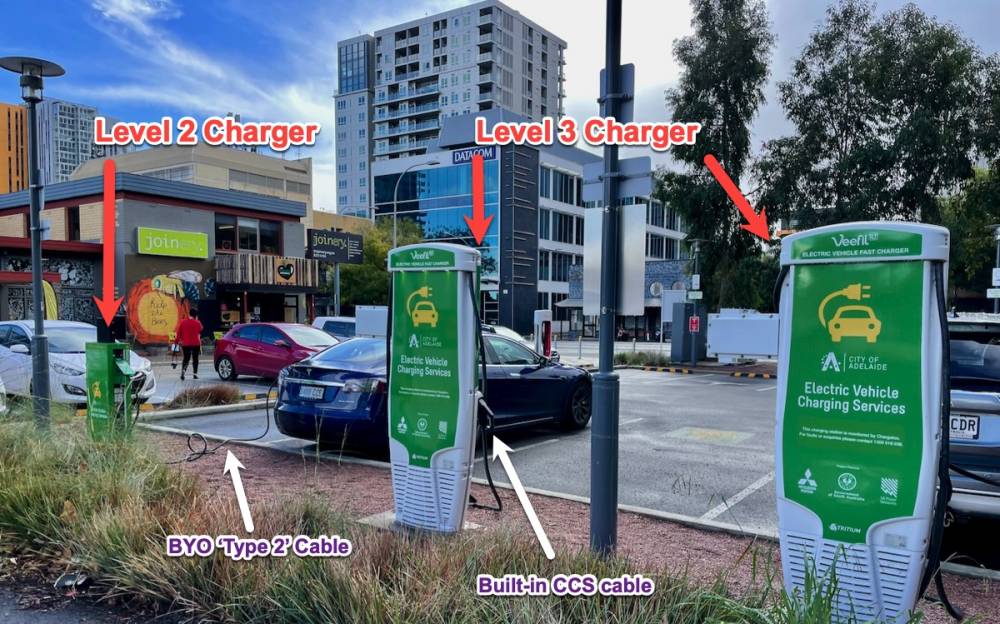
Public Level 2 and Level 3 chargers in Adelaide
Note that most public Level 2 chargers need you to bring your own cable. You can buy them online starting at about $250. You need to get a “Type 2 to Type 2 (32 A, 250 V AC) Three Phase Charging Cable (22 kW)”. They are essential for any EV owner who wants to top up their car whilst parked in public (often with free parking too).
Pro-tip: Be careful not to get a ’16 Amp’ charging cable. A cable limited to 16 A will limit your single-phase charging to a slow 3.6 kW, and will limit 3-phase charging to 11 kW, even if your car can handle more.
Using Older-Style Public Chargers
Before Type 2 connectors, we had – you guessed it – Type 1 connectors. They were installed in many electric vehicles before 2020. As a result, there are quite a few Level 2 chargers dotted around with a Type 1 socket.
The good news is most of these chargers are free. The bad news is you’ll need an adaptor for them on a modern EV.
You can buy a Type 1 -> Type 2 adaptor cable for about $150.
I bought one because my favourite beach (Horseshoe Bay, SA) has one of these chargers, and I can always get a park there with a free charge – even on the busiest beach day. Thanks, Fleurieu Council!
What does it cost to charge away from home?
Some Level 2 EV chargers provided by councils (especially those with the old Type 1 connector) are free to use. Most provided by accommodation and other venues are free too. If you have to pay to use a Level 2 charger, expect to pay around $0.25 to $0.35 per kWh via a credit card tap or an app.
Level 3 chargers offering more than 25 kW of power are expensive. Expect to pay $0.50-$0.65 per kWh – about 10c per km. That’s about 10x more expensive than self-consumed solar energy, but still half the cost per km of a petrol car. The high cost of Level 3 chargers is another reason to get a Level 2 charger at home, so you only need to pay the big bucks for electricity on road trips.
Nerd Fact: Level 3 chargers cost a lot to use because they have to pay high demand charges to the local electricity network. A demand charge is a fee based on the peak kilowatts pulled from the grid. Remember – kW are different to kWh – and if you have four 350 kW chargers all being used at once – those devices are pulling a massive 1.4 megawatts from the grid and will attract an eye-watering demand charge on top of the energy usage costs.
The quality and quantity of publicly available EV chargers are hit-and-miss once you get out of major metropolitan areas.
If you’re going on a cross-country trip, you’ll need to plan ahead, map your route, and call places you plan to stop at to see what charging is available and ensure it’s in working order. This searchable map of public EV charger locations in Australia is a handy tool to help you plan.
Also, be aware public charger uptime is a significant issue in Australia. If you depend on a specific charger to get to your destination – go to the network’s website (e.g. Chargefox) and check that it is in service. Happily, for Tesla owners, the Tesla Supercharging network is more reliable than any other competing network. Happily for non-Tesla owners, Tesla has promised to open up their Superchargers to other manufacturers’ electric vehicles at some point in the future.
Pro-tip: The free app ‘A Better Route Planner’ (ABRP) is invaluable for long EV road trips. Just download and use it – you can thank me later.
For the adventurous
If you do a lot of travel off the beaten track, then industrial ‘CEE’ sockets that are common at showgrounds and caravan parks can be a lifesaver.
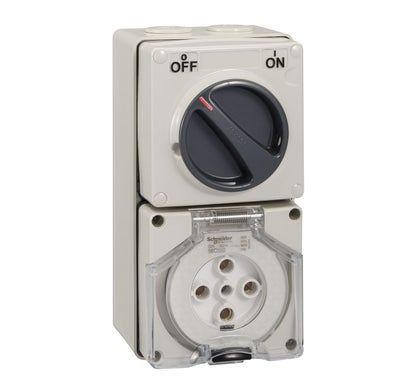
A 5-pin CEE socket commonly found at showgrounds around Australia.
To use them, you’ll need a special tail for your mobile connector (about $200) or – if your mobile connector does not support interchangeable tails – a special 3rd party mobile charger (about $1,500).
There are four types of CEE sockets commonly used (3-pin, 5-pin, 20A, 32A), so ensure you get the correct tail or tails for the areas you visit.
Pro-tip: A great app for finding these unconventional EV charging points is Plugshare. Make sure you go to the search filter settings and enable the more obscure socket types.
11) How much solar power do you need to charge an EV?
If you have standard Level 2, 7kW charging, a typically sized 6.6 kW solar system will not cut it. Remember – you still need to power your house, get through overcast days, and winter.
If you have Level 2 charging at home, you’ll want at least 10 kW of solar panels to comfortably charge on mostly cheap solar energy throughout the year.
I discuss solar power and electric vehicles in detail here. But in my “Solar 101” guide, I simply advise filling your roof with solar panels. It’s not as expensive as it sounds, thanks to how the solar rebate works – and it makes even more sense when you have an EV.
12) Life with an electric car – tips and tricks
Speaking as someone who has two electric cars in my household, I’ve put together some tips for living with an EV:
What electricity tariff are you on?
When you have an EV, the electricity tariff you’re on becomes much more important. You can easily double your electricity consumption after getting an EV.
If your solar power system is not big enough to comfortably charge your car, then get more solar capacity. If that is not an option, look for a cheap daytime rate tariff. Then when your EV is charging during the day, any grid electricity used to top up the charging will be cheap.
If you have enough solar power to cover your charging during the day, there will likely be plenty of times when you just have to charge overnight. So consider a tariff with a cheap overnight rate.
And it bears repeating: stay away from ‘demand tariffs’ at all costs.
Avoiding Peak Hours
If you are on a time-of-use tariff, you never want to charge during the peak period, when the cost per kWh can be eye-watering (up to 60c per kWh). You don’t need a smart charger to do this because any decent EV will have a scheduling setting. Find this setting and command the car to never charge in your peak time period unless you override it.
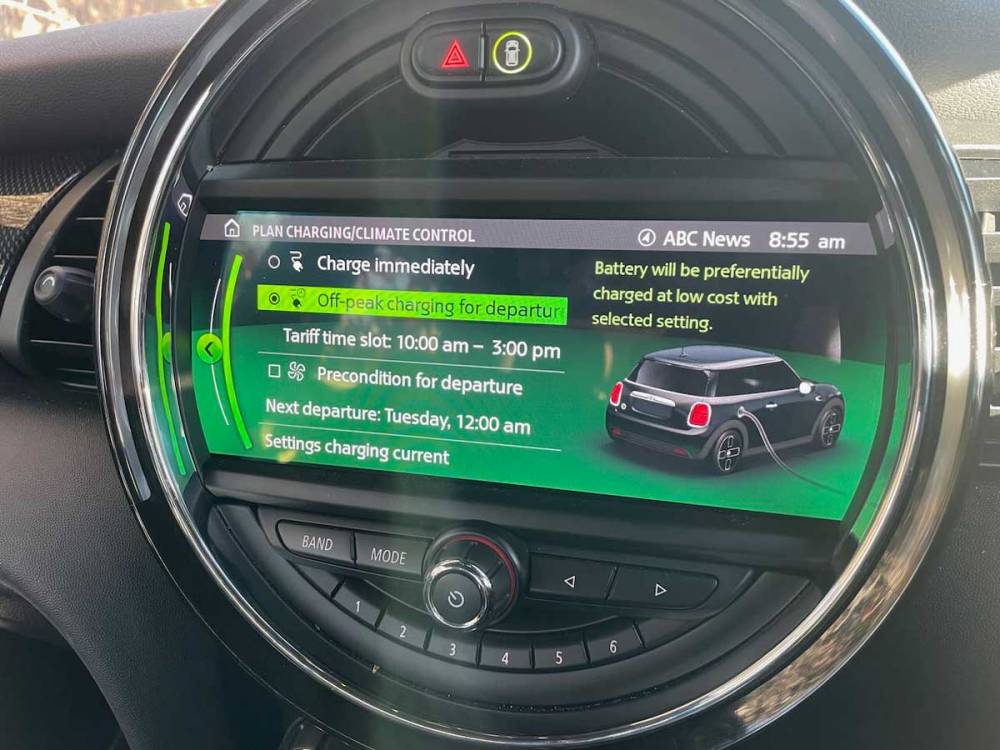
Scheduled charging on a Mini Cooper SE to match the off-peak daytime rate.
Solar-Smart Chargers
If you have a 6.6 kW solar system and don’t plan to expand it, don’t worry about getting a ‘smart’ charger that tops up from surplus solar. Unless you do very little driving, you will not have enough excess solar power to charge the car at any reasonable speed, so you’ll find that you are always overriding the solar-smarts.
Your car’s battery chemistry dictates charging practices.
Modern electric vehicles use lithium-ion battery technology in two main flavours: NMC (Nickel Manganese Cobalt) and LiFePO (Lithium Iron Phosphate)
If you have an NMC battery (performance and long-range Tesla models), you’ll want to avoid charging it over 90% full unless you’re planning a long trip. And you’ll also want to avoid letting it dip below 10% too often.
Keeping it charged in the sweet spot of below 90% and above 10% will ensure you get the maximum lifespan possible from your battery.
A car with a LiFePO battery can handle 0-100% SoC (state of charge) without any drawbacks.
If you have a dedicated charger, keep it out of the sun
Power electronics do not fare well in the Aussie sun, especially if designed for European climates.
On my home, I have a ‘Zappi’ EV charger on a south-facing wall (south-facing gets the least sunlight). Despite this, the cover has gone yellow, and I’ve had to replace the device twice (under warranty).
Update: The Zappi manufacturer has since claimed that the blown device is designed as ‘sacrificial’ and insists that my house must have experienced multiple power surges causing their device to fail. No other electronic devices in my home failed at the times the Zappi failed. I have since replaced the Zappi with a Delta AC Max charger.
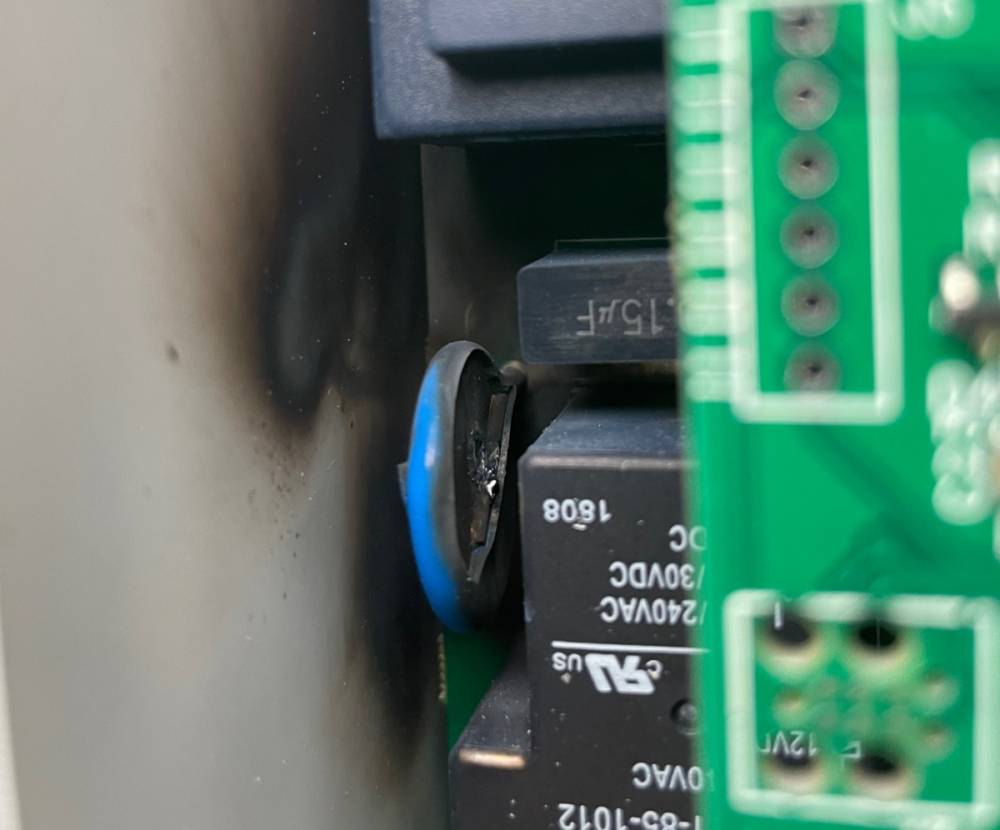
What happened to my UK-made Zappi charger after a year on a south-facing wall in Adelaide. I’m now on my third unit.
Don’t leave your vehicle unplugged for long periods
If you’re going away on a trip without your car (for a few weeks or longer), leave it plugged in the whole time. There’s no harm in leaving your car plugged in; if you don’t, phantom power draw can drain its battery and kill the 12-volt battery.
Don’t use a home battery to charge your car if you can help it
Charging from a home battery will quickly deplete it, as home batteries are nowhere near the size of EV batteries.
For example, a Tesla Model 3 Long Range has a 79 kWh battery. A Telsa Powerwall home battery can hold 13.2 kWh. Draining your entire battery into the car would only fill it up 16%. This battery energy would be more useful in your home.
It can be challenging to configure an EV charger to avoid draining your home battery – so talk to your installer about this before you accept a quote.
13) Bi-directional charging – the holy grail of EV ownership?
Powering your home with a giant battery on wheels is known as V2H (Vehicle to Home) or bi-directional charging.
Right now, bi-directional EV charging is almost impossible to do in Australia; except SA. This is due to grid regulations, not any technical limitation.
Once regulations catch up with the realities and capabilities of electric vehicles, most electric vehicles will likely support bi-directional charging.
Some current cars can export energy, such as the Gen 2 Nissan Leaf and certain Hyundais. But most can’t – including all Teslas.
To use bi-directional charging on cars that support it, you need a dedicated 2-way charger. There are only two available in Australia I know of, and they cost over ten grand plus installation. And you’ll need permission from your DNSP (local electricity network) to install one. Good luck!
Also, remember the more you charge and discharge your EV battery, the faster it will degrade.
Time will tell if advances in battery technology make degradation less of an issue. I, for one, am optimistic.
14) An overview of EV charger brands available in Australia
My EV Charger Comparison Table compares the specs, features and prices of all EV chargers sold in Australia. Here’s a chart showing all the brands I’ve heard good things about from installers and users and would be happy to have on my own home:
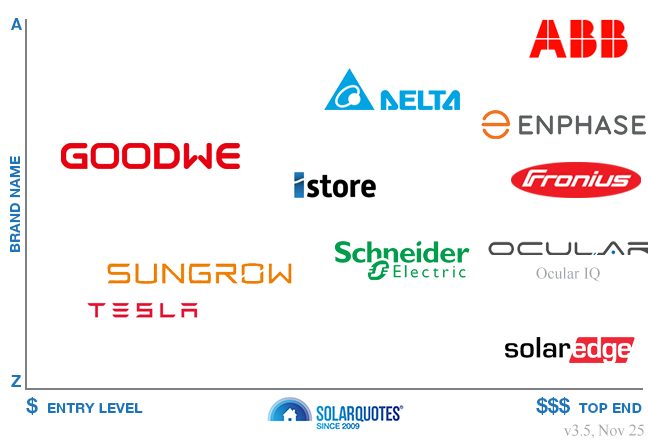
The chart Y-position is simply in alphabetical order, and the X-position is the estimated retail price.
Note: I have the popular MyEnergi Zappi charger on my own home, and it’s not on the chart. I’m on my third Zappi (and second Zappi cable) due to serious hardware failures. Hopefully, the latest V2 Zappi will be more robust in Australia, but I’ll take some convincing.
Wrapping up
I hope you’ve found this guide useful! If there’s anything you think I’ve missed or if you have any questions regarding the contents of the guide, my contact details are:
Email: [email protected]
Tel: 08 7200 0177
Snail mail: 3/39 Grenfell St, Adelaide, SA 5000 Australia
The next step
If you’re looking to install an EV charger, I have a network of pre-vetted, experienced installers who can provide quotes to supply and/or install a device for your home.
Hit the button below to get started:
